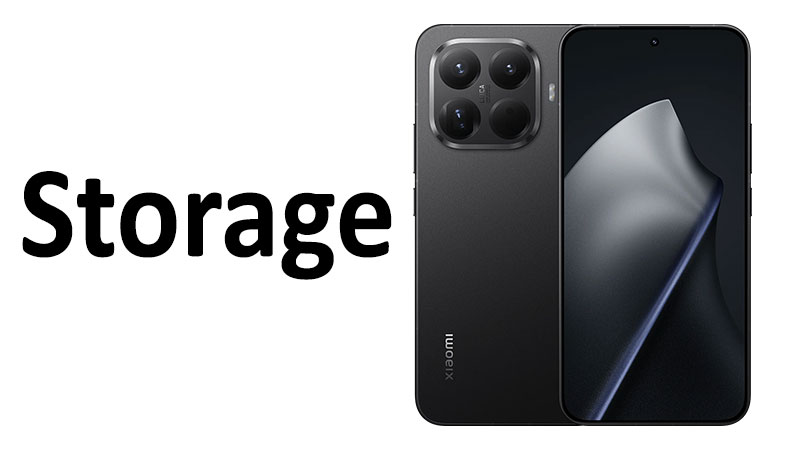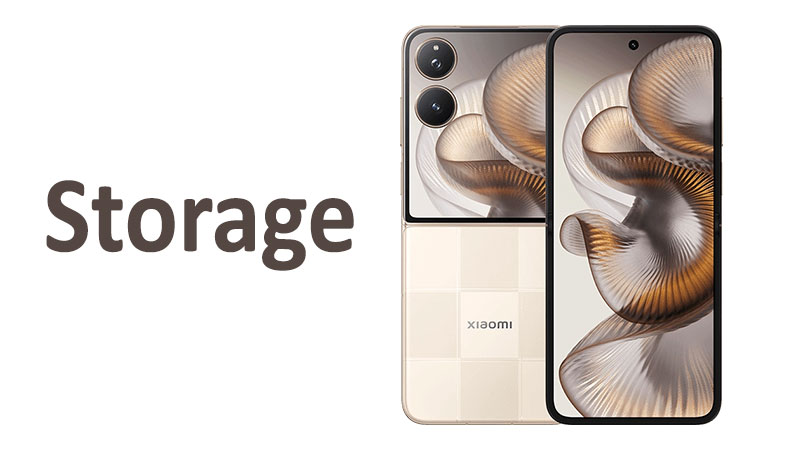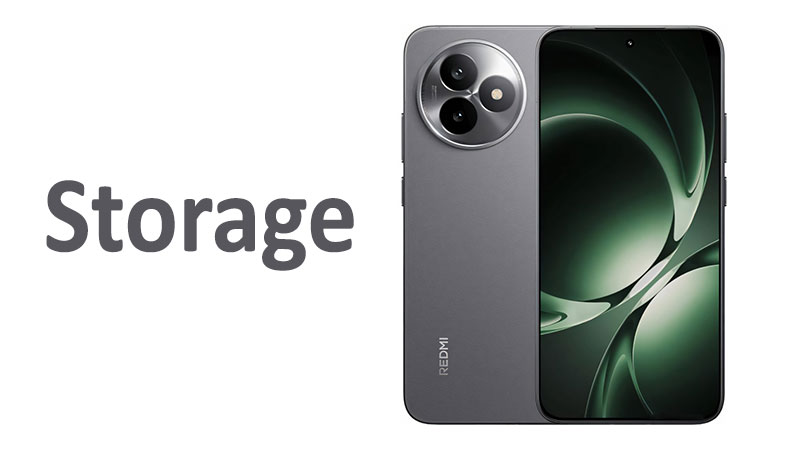The Xiaomi 15T Storage is a critical topic for prospective buyers. Understanding both the capacity and the technology is essential. This article provides a comprehensive overview of the internal memory options. We will explore the performance implications of the cutting-edge flash storage. Ultimately, this guide will help you make an informed purchasing decision.
The Foundation: Understanding Xiaomi 15T Storage
The Xiaomi 15T series sets a new standard for smartphone memory. It offers two distinct capacity options for consumers. These are the versatile 256GB model and the expansive 512GB model. Furthermore, both configurations utilize the latest Universal Flash Storage (UFS) technology. Specifically, they employ UFS 4.1. This is a significant leap forward in mobile performance.
Storage capacity dictates how much data you can keep locally. This includes photos, videos, apps, and system files. The choice between 256GB and 512GB depends heavily on individual usage patterns. We will examine these patterns in detail later in this guide. For now, understand that both options provide generous space.
The storage type, UFS 4.1, influences the phone’s speed. It affects how quickly apps open and how fast files transfer. This technology also dictates the responsiveness of the entire operating system. The Xiaomi 15T leverages this speed for a superior user experience. It dramatically improves operations like 8K video editing and intensive mobile gaming.
Capacity Options: A Closer Look
Xiaomi provides two primary tiers for the 15T storage. This gives consumers flexibility based on their needs and budget.
The 256GB option serves as the standard baseline model. This capacity is more than sufficient for most casual users. It easily holds thousands of photos and hundreds of apps. Users who primarily rely on cloud storage will find 256GB adequate. They might stream most of their media content. This option is typically more cost-effective.
The 512GB option targets power users and content creators. It is designed for those who save high-resolution media locally. This includes 4K and 8K video content. Mobile gamers with large game libraries also benefit greatly. The additional space provides peace of mind for future software updates and large operating system files. Choosing 512GB future-proofs the device for the coming years.
The Power of UFS 4.1 Explained
UFS 4.1 represents the pinnacle of current mobile storage technology. JEDEC, the global standards body, defines this specification. It provides exceptional speed and efficiency gains over previous standards. These improvements are crucial for modern flagship phones.
UFS 4.1 works by maximizing data transfer lanes. It operates on the high-speed MIPI M-PHY 5.0 specification. This drastically increases the theoretical bandwidth. Consequently, the Xiaomi 15T can access data much faster. This results in quicker boot times and seamless multitasking.
In addition to speed, UFS 4.1 is remarkably energy efficient. It features an optimized power management system. This translates directly to better battery life. High-performance operations consume less power than older UFS standards. Therefore, your battery lasts longer even during intense use.
Specialized Comparison: UFS 4.1 Versus UFS 3.1
To appreciate the Xiaomi 15T storage, we must compare UFS 4.1 with its predecessor. The most common previous standard in flagship phones was UFS 3.1. While UFS 3.1 was already very fast, UFS 4.1 offers a generational leap. This comparison highlights why the 15T feels so responsive.
Bandwidth and Read/Write Speeds
UFS 4.1 effectively doubles the maximum theoretical data transfer rate. UFS 3.1 offered peak sequential read speeds around 2,100 MB/s. UFS 4.1 pushes this limit past 4,200 MB/s. Similarly, sequential write speeds see a proportional boost. They climb from approximately 1,200 MB/s to over 2,800 MB/s.
This speed increase is immediately noticeable in daily tasks. For example, installing large mobile games is significantly faster. Loading times within demanding applications are dramatically reduced. Transferring gigabytes of video from the phone to a computer is also much quicker. This saves users valuable time every day.
Power Efficiency Advantage
Another critical aspect is power consumption. UFS 4.1 utilizes a more compact and advanced controller design. It also operates at a lower voltage (e.g., 2.5V compared to 3.3V for older generations). This results in a substantial improvement in power efficiency.
This efficiency means the storage subsystem consumes less battery. This occurs even when reading or writing large amounts of data. For users who frequently record high-resolution video, this is a major benefit. It helps keep the phone cool and extends the shooting time. Ultimately, this enhanced efficiency contributes to the Xiaomi 15T’s overall endurance.
Comparison with Competitors
Many competing flagship models still rely on UFS 3.1 or a slight variation. Xiaomi’s adoption of UFS 4.1 places the 15T at the technological forefront. Flagship status is often defined by the fastest components available. The UFS 4.1 inclusion demonstrates Xiaomi’s commitment to top-tier performance.
Some ultra-premium competitors also use UFS 4.0 or UFS 4.1. However, UFS 4.1 ensures that the Xiaomi 15T is competitive in raw data performance. It guarantees that the device’s storage will not be a bottleneck. This is true even when paired with the latest powerful mobile processors.
Pros and Cons of the Xiaomi 15T Storage Setup
Evaluating the storage options requires a balanced view. The combination of capacity and technology brings several clear advantages. However, there are also some trade-offs to consider before purchasing.
Pros of Xiaomi 15T Storage
The advantages of this setup are compelling for any potential buyer.
- Unmatched Speed: UFS 4.1 provides the fastest mobile data transfer rates commercially available.
- Future-Proofing: The high speeds are ready for future apps and operating system demands.
- Better Battery Life: Enhanced power efficiency prolongs device usage between charges.
- Excellent Capacity Baseline: The 256GB starting point is generous for modern users.
- Smooth User Experience: Fast storage minimizes loading screens and system lag.
Cons of Xiaomi 15T Storage
While the technology is excellent, a few minor drawbacks exist.
- No MicroSD Expansion: Like many modern flagships, the Xiaomi 15T lacks a MicroSD slot. Users cannot easily expand the capacity later.
- Higher Cost for 512GB: The jump to 512GB increases the total device price. This premium is unavoidable for those needing maximum space.
- Limited Initial Supply: Newer technologies like UFS 4.1 can sometimes face supply limitations at launch.
Capacity Deep Dive: 256GB vs. 512GB Buyer Personas
The most critical decision for a buyer is selecting the right capacity. This choice should align with your daily usage and future needs. Selecting the wrong size leads to unnecessary compromises later on. Consider these four distinct buyer personas.
Persona 1: The Casual User (256GB Recommended)
This user primarily uses their phone for communication and light entertainment. They mainly use social media apps, web browsing, and simple games. Their photo library is modest and often backed up to the cloud automatically. They rarely record videos in 4K resolution.
For the Casual User, 256GB is the perfect fit. It offers plenty of room for core apps. It provides a generous buffer for system updates and downloaded media. The remaining space is sufficient for several years of typical phone use. Spending more on 512GB is likely unnecessary for this persona.
Persona 2: The Mobile Gamer and Media Enthusiast (512GB Recommended)
This buyer demands high-performance gaming and saves movies for offline viewing. Modern mobile games, especially large RPGs or open-world titles, consume huge amounts of space. A single game can easily exceed 10GB after all updates. They frequently download full seasons of shows for travel.
The 512GB variant is essential for this user. It allows them to maintain a large library of installed games. They never have to worry about running out of space before a long flight. This capacity supports their high-demand, local data consumption habits.
Persona 3: The Content Creator (512GB Mandatory)
This persona uses the Xiaomi 15T camera system to its full potential. They regularly shoot 4K and 8K video content. They edit photos in RAW format. A single minute of 8K video footage can consume hundreds of megabytes. Professional workflows require significant local storage for editing and rendering.
Content creators must choose the 512GB capacity. In fact, 512GB should be considered the minimum starting point for this use case. They need the expansive storage to manage multiple large projects simultaneously. The UFS 4.1 speed is equally vital for fast scrubbing and rendering of video files.
Persona 4: The Longevity Seeker (512GB Recommended)
This buyer plans to keep their phone for four years or longer. They understand that app sizes grow over time. They know that operating system updates, patches, and cached data accumulate. They want a device that performs optimally throughout its entire lifespan.
The 512GB model provides the best long-term value for this user. Having double the capacity means fewer difficult data management decisions later on. It ensures that the phone’s performance remains consistent even as the storage fills up. This extra capacity is a form of insurance against obsolescence.
The Buyer’s Comprehensive Guide: Key Considerations
Choosing the right storage involves more than just selecting a number. Buyers should weigh their digital lifestyle against the available options. Understanding four key areas will solidify your choice. These points are especially important in the age of fast cameras and cloud services.
1. The Impact of 8K Video Recording
The Xiaomi 15T is capable of capturing stunning 8K resolution video. This feature offers incredible detail and quality. However, the files generated are massive. Recording just a few minutes of 8K footage will quickly consume gigabytes of space.
If you plan to use 8K recording even occasionally, you need more capacity. The 512GB option is strongly recommended for any 8K recording intent. Otherwise, you will constantly be transferring files to external storage. This defeats the purpose of having a powerful, mobile camera system.
2. Cloud Storage Integration
Many users rely heavily on cloud services like Google Drive, Dropbox, or OneDrive. Cloud storage is an excellent way to offload photos and videos. This can significantly reduce the pressure on your internal phone storage.
If you are a disciplined cloud user, the 256GB option is very feasible. You can set up automatic backups for all media files. This allows you to delete local copies regularly. Conversely, if you dislike the cloud or have unreliable internet access, choose 512GB. Local storage remains the fastest and most reliable access method.
3. App Bloat and System Overhead
The operating system and pre-installed apps take up a portion of the total capacity. On average, this system overhead can be 20GB to 30GB or more. This leaves the user with less usable space than advertised.
Furthermore, apps grow larger over time as features are added. The caches and temporary files of popular apps accumulate quickly. Therefore, your usable space diminishes naturally over the life of the phone. Factor in this unavoidable consumption when making your decision.
4. Longevity and Resale Value
The choice of storage capacity affects the phone’s long-term appeal. A phone with larger storage retains its value better on the secondary market. Buyers are often willing to pay a premium for more capacity later on.
If you frequently upgrade your phone, the 512GB model may fetch a higher resale price. This can partially offset the initial cost difference. The larger capacity ensures the phone remains highly desirable to a wider range of future buyers. It minimizes the perceived obsolescence of the device.
Special Feature Comparison: Competitor Flash Storage
We briefly compare the Xiaomi 15T’s UFS 4.1 storage with competing solutions. While UFS is the dominant standard, some manufacturers use other high-speed technologies. However, UFS 4.1 remains difficult to beat in raw throughput.
Many budget-friendly competitors use the older UFS 3.1 or even UFS 2.2. The performance gap between these and UFS 4.1 is immense. The Xiaomi 15T offers significantly faster app loading than these devices. This difference provides a clear advantage in daily speed and responsiveness.
Even among other flagship brands, UFS 4.1 is still being adopted. Xiaomi’s commitment to this standard ensures best-in-class performance. This technology is a critical selling point for the 15T. It ensures a premium and fluid experience across all demanding tasks.
Conclusion: Making the Informed Choice
The Xiaomi 15T offers exceptional storage technology paired with flexible capacity options. The inclusion of UFS 4.1 storage guarantees top-tier speed and power efficiency. This ensures a responsive and future-proof smartphone experience. The UFS 4.1 standard sets a high bar for competitor performance.
Your ultimate decision rests on your digital habits. The 256GB model is ideal for the cloud-reliant, casual user. It is the most cost-effective choice for general usage. Conversely, the 512GB option is a wise investment for content creators and power users. It is mandatory for heavy gaming and 8K video recording.
Ultimately, the choice should prioritize future-proofing your device. Given the lack of MicroSD expansion, choose the maximum capacity you can afford. The extra investment in 512GB pays dividends in longevity, performance, and peace of mind. Both options, however, benefit from the lightning-fast UFS 4.1 foundation.
Frequently Asked Questions (FAQ)
What is the speed difference between UFS 4.1 and UFS 3.1?
UFS 4.1 offers nearly double the data transfer bandwidth compared to UFS 3.1. This means faster app loading and quicker file transfers overall. It represents a significant generational speed increase.
Does the Xiaomi 15T support MicroSD card expansion?
No, the Xiaomi 15T does not feature a dedicated MicroSD card slot. Users must rely solely on the internal storage capacity selected at purchase. This makes the initial choice crucial.
Is 256GB enough for a serious mobile gamer?
For a serious mobile gamer who installs many large, graphically intensive titles, 256GB may become restrictive quickly. The 512GB model is strongly recommended for this specific use case.
How does UFS 4.1 impact battery life?
UFS 4.1 is significantly more power-efficient than previous UFS standards. This means the storage subsystem consumes less energy during data access. This efficiency positively contributes to longer overall battery life.
What is the primary benefit of UFS 4.1 speed?
The primary benefit is system responsiveness. Applications launch instantly, large files transfer in seconds, and multitasking is seamless. It eliminates storage-related bottlenecks completely.



